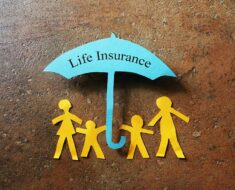Record flooding erupted after one of the most devastating hurricanes the United States has ever known. In fact, in the southeastern areas of the Lone Star State, most homeowners don’t even have flood insurance. And who can blame them? There was never a precedent in the locality. Although hail and wind storms are a constant concern for property and business owners, no one imagined that rainwater would contribute to the enormous damage suffered and spread throughout the country in recent days. Surely not the mortgage companies, as they don’t even require it from borrowers!
But now that the death toll and people forced to flee their homes in search of refuge have risen, one thing is clear. When things finally calm down, homeowners and people in the commercial sector will have to deal with the epic losses and damages on their own due to the lack of related coverage.
For homeowners without flood coverage, the facts are uncomfortable as they are painful: A standard homeowners insurance policy doesn’t protect against flooding and related damage. The insurance industry emphasizes in no uncertain terms that compensation is only provided to those who had the foresight to purchase flood insurance in the event of water damage resulting from weather conditions such as a hurricane, tropical storm, or other inclement weather.
A little history about flood insurance:
The year was 1968 when the United States Congress outlined its flood program. Designed to help home and business owners from the financial ravages of a damaging flood, their policies are offered in all communities that are involved in the rules of engagement.
Flood coverage protects homeowners or renters from building and content damage.
This includes the following:
• The structure, as well as the foundations of the building.
• Electrical and plumbing systems
• Central air conditioning, oven, water heater
• Refrigerator, stoves, and any installed appliances, such as a dishwasher
• Carpet that has been installed over a bare floor
• Personal clothing and electronics
• Curtains
• Portable heaters and air conditioners
• Carpeting that is not included in the coverage of the property
• Washing machines and drying machines
Typically, flood compensation claims include:
• Replacement Cost Value: Up to eighty percent of the amount needed to replace property damage to a single-family primary residence
and
• Actual cost value: replacement costs at the time of loss reduced by physical depreciation
Note: The flood program always uses the actual cost value to determine reimbursement for personal property.





